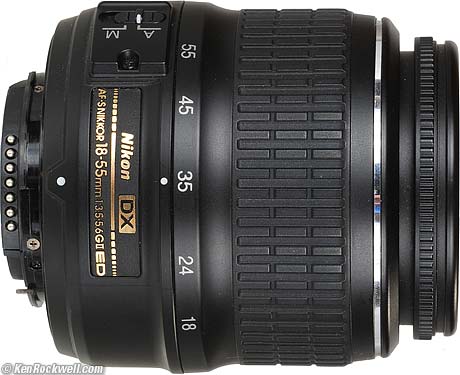Focal Length
In optics, it is defined as the distance between the vertical center of the focusing lens and the focal point. As can be deduced from the below image, closer the lens comes to the sensor (focal plane), lower the mm figure goes (focal length) and wider the image.
 |
| Image Courtesy: dptips-central.com |
Camera bodies are basically of 2 types - full frame and cropped sensor. In case of the latter, a cropping factor comes into play, which is somewhat equivalent to 1.3. So an 18mm wide angle lens on a cropped-sensor body will yield a focal length of 18 x 1.3 = 23.4mm. Hence, if you want to harness the real power of wide angle lenses, no cropped-sensor body will give you that like a full frame body would :)
Classification of lenses
Based on the focal length of the lens, it can be classified under one of the below categories:
- Prime: this lens has a fixed focal length. For example, the 50mm f1.8 Nikon lens
- Zoom: any lens that has a range of focal lengths (you can zoom in/out) comes under this classification. For example, 18-55mm f3.5:5.6
- Wide angle: a lens that provides an eventual focal length of 35mm or below is called a wide-angled lens. Please note that in case of cropped-frame camera sensors (Dx in case of Nikon and APS-C for Canon), presence of the cropping factor means that your 35mm lens is not actually an 35mm lens and hence is not a wide angle lens.
- Super zoom/telephoto: with focal lengths beyond 135, a lens can be considered to belong to this segment.
The below snapshot is of a Nikon Dx 18-55mm lens. So the next time you look at a lens, I hope you won't be puzzled about the meaning of these golden colored letters :)
 |
| Image Courtesy: kenrockwell.com |
Prime Lenses
If you are wondering why one would settle for a prime lens, which is no less expensive than a decent zoom lens, then I can answer that for you. A prime lens has lesser components as compared to a zoom lens (sometimes a zoom lens has upto 35 lens components in it) and hence have less negative effects on the image capture process. Due to multiple components in a zoom lens, the light entering the lens is reduced by the time it reaches the sensor. Also, zoom lenses work best at the mid-range; an 18-200 lens would would best at around 125mm while it would create problems like distortion at the extreme ends of 18 and 200 mm. Also, due to architectural provisions/restrictions, a prime lens can offer you a much wider aperture of 1.2 or 1.8 mm which is almost not possible in zoom lenses (most zoom lenses have a min aperture of f3.5). A focal length of 1.8mm yields a much shallower dof which is awesome for portrait photography.
In this image, do you notice the shallow dof? The face of the guitarist is in focus while even his hands which are quite near to his face are out of focus, not to mention areas farther away (the end of the guitar and the cushions). This was shot with a 35mm f1.8 nikon lens. If i were to shoot this with an 18-55mm even at f.3.5, the dof would have been much deeper and the focussed area would encompass more of the guitar, thus stealing attention from the guitarist and confusing it with the guitar.

No comments:
Post a Comment